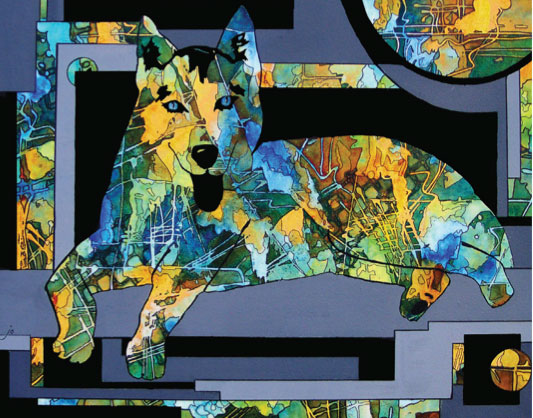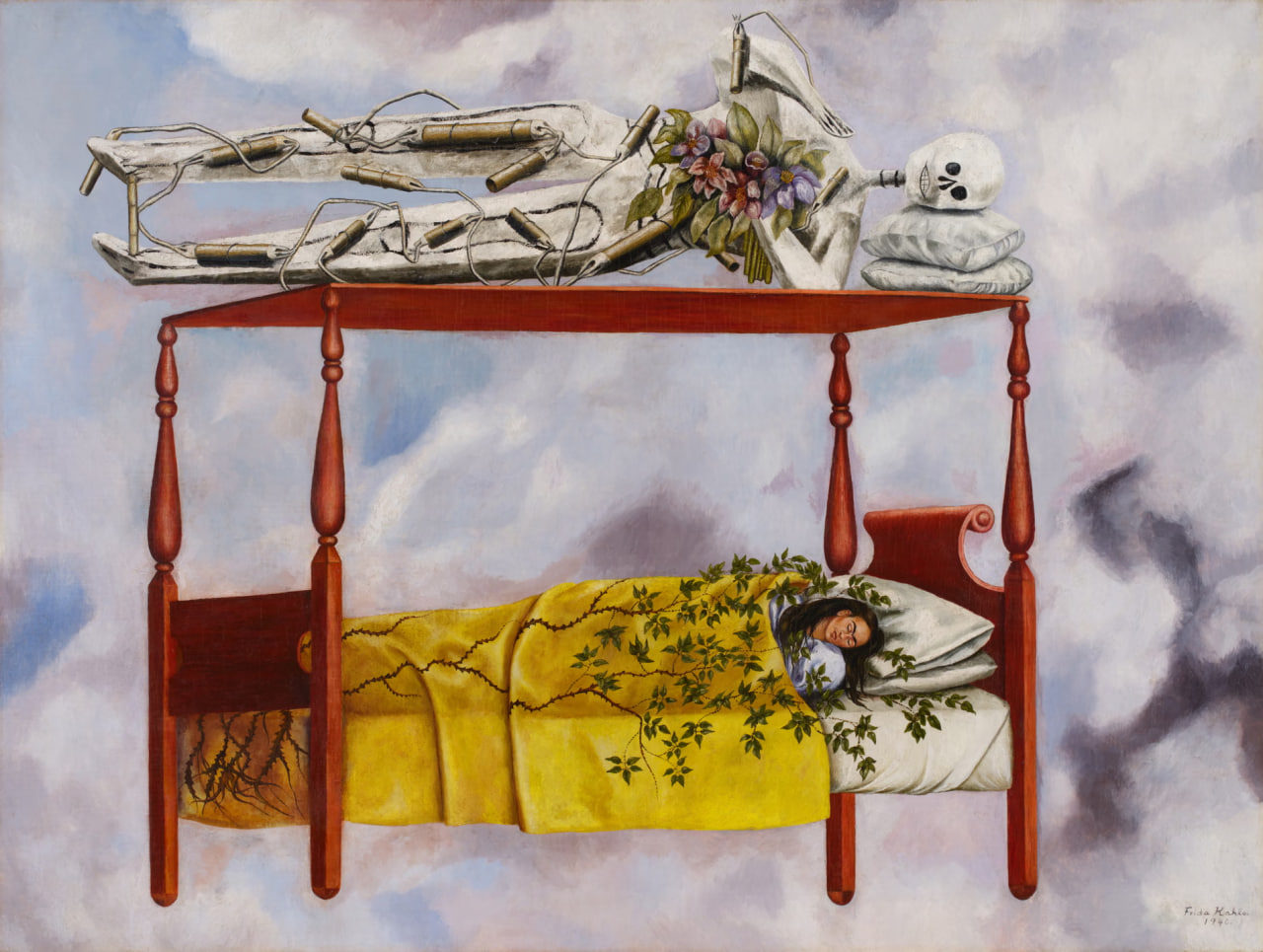by Jo Toye
Limiting the changes that you make from one painting to the next can greatly enhance your growth as an artist. Today I want to share why I believe working in a small format while learning, can yield big results, for abstract art and beyond.
In my art classes and painting workshops, I instruct my students to bring paper that has been cut into pieces no larger than 100 square inches (254 sq. cm). In fact, I encourage them to work no larger than 8″× 8″ (20cm×20cm) as that’s the size I use for my demonstrations. At first, most are skeptical, but I’ve queried all of my past students and they all agree that working this way while learning has immense and immediate benefits. My goal is to set them free to play and experiment and in the process learn the techniques that are being offered in each demonstration. Working small sets the stage for this to take place.
‘Cheyenne’ (acrylic on aquabord, 11×14) by Jo Toye, Collection of Burt Bork (Pin this!)
Investment Is Small
By working small you will have very little investment in time, effort, paint or paper. When the only risk is a tiny little piece of paper, it’s easier to adopt the attitude, “What do I have to lose?” Oddly enough, it’s when you feel you don’t have anything to lose that you often come up with some of your best and most innovative work.
Focus on Learning
Another advantage to working small is that it allows you to focus on the specific technique you’re learning. Instead of setting out to make a finished painting and all that it requires, your goal will be to simply concentrate on learning the technique at hand. This will give you more freedom to enjoy the process and move beyond your usual way of working—which can be uncomfortable.
It’s really a wonder that we learn anything as adults since—silly as this sounds—as adult learners we don’t like to do anything that we don’t already know how to do well. Really, it’s true. So by working small, and focusing on learning only the technique rather than producing some awesome work of art, you will have greater confidence to give something new a try.
Visit North Light Shop to order your copy of
Abstract Explorations in Acrylic Painting by Jo Toye today!
Reference for Larger Paintings
Making small reference samples is perhaps the greatest advantage to working small while trying out a new technique or process. Small sample pieces are invaluable for future reference.
In my classes I hand out step-by-step instructions for each technique I present. I then encourage my students to take their finished reference sample, along with any notes they may have taken about the process, and place it in a clear sheet protector with the detailed instructions. You can do something similar anytime you’re experimenting with a new technique or process.
As you work, make note of what is and isn’t working. Jot down helpful notes such as, “I think saving more line with the masking pen would have resulted in greater design possibilities.” Or, something like, “Loved the colors that I used, they were…” You can then slip your notes along with the sample into a sheet protector and start a notebook that will serve as an invaluable reference for incorporating these ideas into future paintings. Another option is to write your notes on the back of the painting once the sample is dry.
I’m sure you can relate to looking at an old painting and wondering how you painted it or what colors you used. This becomes more problematic the more you move into an experimental way of painting. Creating these small samples for each experiment will not only serve as documentation, but will also often lead to further inspiration.






